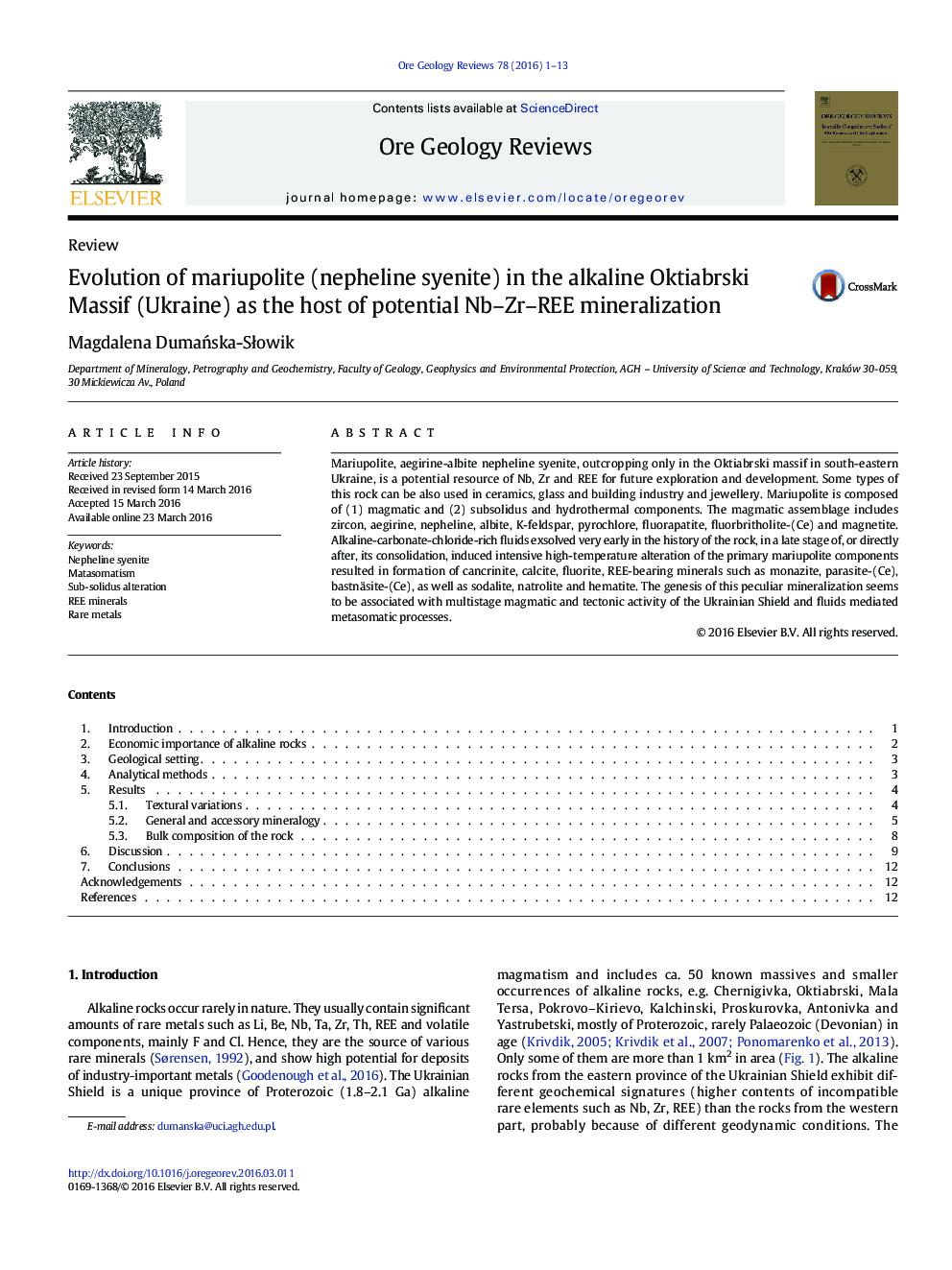| Article ID | Journal | Published Year | Pages | File Type |
|---|---|---|---|---|
| 4696861 | Ore Geology Reviews | 2016 | 13 Pages |
•Mariupolite crystallized under hypabyssal conditions.•Magmatic and subsolidus components make up the composition of mariupolite.•Juvenile alkaline-carbonate-chloride fluids affected the melt very early in its history.•Mariupolite is a potential resource of Nb, Zr and REE.
Mariupolite, aegirine-albite nepheline syenite, outcropping only in the Oktiabrski massif in south-eastern Ukraine, is a potential resource of Nb, Zr and REE for future exploration and development. Some types of this rock can be also used in ceramics, glass and building industry and jewellery. Mariupolite is composed of (1) magmatic and (2) subsolidus and hydrothermal components. The magmatic assemblage includes zircon, aegirine, nepheline, albite, K-feldspar, pyrochlore, fluorapatite, fluorbritholite-(Ce) and magnetite. Alkaline-carbonate-chloride-rich fluids exsolved very early in the history of the rock, in a late stage of, or directly after, its consolidation, induced intensive high-temperature alteration of the primary mariupolite components resulted in formation of cancrinite, calcite, fluorite, REE-bearing minerals such as monazite, parasite-(Ce), bastnäsite-(Ce), as well as sodalite, natrolite and hematite. The genesis of this peculiar mineralization seems to be associated with multistage magmatic and tectonic activity of the Ukrainian Shield and fluids mediated metasomatic processes.
Graphical abstractFigure optionsDownload full-size imageDownload as PowerPoint slide
